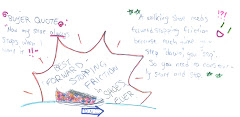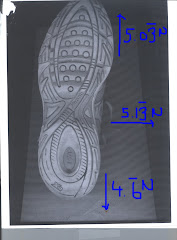We conclude that the ridges and the direction of the ridges really affect the sneakers' friction, and that running shoes apparently have the most sideways-stopping friction, basketball shoes have most forward-stopping friction, as well as walking shoes, although the results were quite close.
This does not support our theory, which was that running shoes would have most starting friction for a strong boost whilst sprinting and/or marathons, and that basketball shoes would have the most sideways-stopping friction for the many sideway steps and quick brakes. We had hypothesized that the walking shoes would have about the same amount of friction for all three directions.
We might have made errors with the times the sneakers started to move, as it was quite challenging to see exactly when it started being pulled along. Also, the readings on the force meter may have not been accurate. That may be the reason why our results did not support our hypothesis, but it is also possible that our hypothesis was incorrect. Next time, we must try keeping a closer eye on the sneakers and must have someone to read the force meter when another reports when the sneaker starts moving. That may be a more accurate way than two people watching the shoe and indivisually reading the force meter when the sneaker seems to have moved.
We have learnt that our hypothesis is incorrect, yet are not entirely sure if our experiment was accurate. For our next experiment, we will definitely have clearer jobs and try to read the force meter faster and more accurately.






